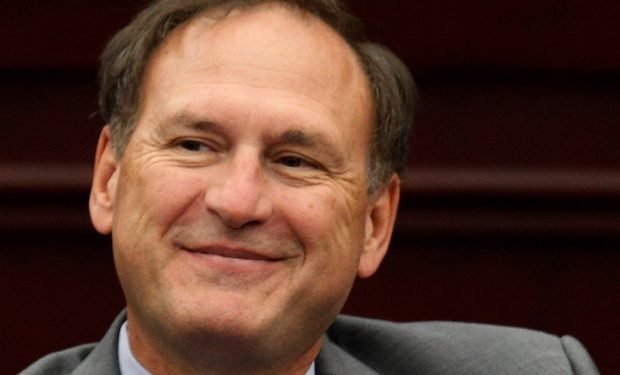European satellite plunges back to Earth in first-of-its-kind assisted re-entry
"This is quite unique, what we are doing here."
STEPHEN CLARK - 7/28/2023

Enlarge / Artist's illustration showing the orbital tracks of the European Space Agency's Aeolus satellite.
ESA/ATG medialab30WITH
The European Space Agency deftly guided one of its satellites toward a fiery re-entry into Earth's atmosphere Friday, demonstrating a new method of post-mission disposal to ensure the spacecraft would not fall into any populated areas.
The Aeolus satellite was relatively modest in size and mass—about 1.1 metric tons with its fuel tank empty—but ESA hailed Friday's "assisted re-entry" as proof that the space agency takes the stewardship of space seriously.
When the Aeolus mission was conceived in the late 1990s, there were no guidelines for European satellites regarding space debris or the safety of their re-entry. Aeolus took nearly 20 years to get to the launch pad, operated in space for five years, and now regulations have changed. Future ESA satellites will need to be capable of a targeted re-entry, where rocket engines steer the spacecraft toward a specific patch of ocean or are designed to burn up from aerodynamic heating.
Because it was designed two decades ago, Aeolus did not have to meet these standards, and the satellite didn't have a propulsion system that could target a pinpoint re-entry. Engineers originally anticipated Aeolus would naturally re-enter the atmosphere after running of fuel. Because it was in a polar orbit, Aeolus could have fallen nearly anywhere. ESA expected about 20 percent of the spacecraft would survive the scorching temperatures of re-entry and make it to Earth's surface.
Officials decided to end Aeolus's science mission measuring winds from space in April when the satellite still had some gas in the tank—enough for a series of thruster firings to steer the satellite toward a re-entry corridor well away from any people.
“This is quite unique, what we are doing here," said Holger Krag, head of ESA's safety office, before Friday's final re-entry maneuvers. "You don’t find examples of this in the history of spaceflight. The re-entry of the Skylab space station in the late ‘70s—that was a bit of a similar type of assisted re-entry by changing the attitude and therefore changing the exposed area (to atmospheric drag)."Advertisement
NASA put Skylab into a tumble in an attempt to better control where the spacecraft fell to Earth, but debris from the 76-metric ton space station was scattered across Western Australia when it re-entered the atmosphere in 1979. NASA's efforts in 1979 had a "far lower level of control than we have here today," Krag said.
“We are doing this with the best standards that we have today," said Simonetta Cheli, ESA's director for Earth observation.
Krag said he hopes ESA becomes a "role model" for other space agencies and commercial companies to commit to tackling the problem of space debris and the dangers of uncontrolled re-entry. ESA is partnering with a Swiss company for a mission in 2026 to demonstrate the removal of a piece of space junk from orbit.
An 'impossible mission'
During its nearly five-year mission, Aeolus flew in a polar orbit at an altitude of about 200 miles (320 kilometers), already lower than the height of the International Space Station and most other satellites. Aeolus was a pioneering Earth science mission that measured wind speeds around the world using a sophisticated on-board laser, and it was so successful that ESA and the European weather satellite agency Eumetsat plan to launch a follow-on mission called Aeolus 2 planned for launch at the end of the decade.
Aeolus was originally designed as a science and technology demonstration mission, but its global wind measurements proved so valuable that the data were incorporated into operational numerical weather forecast models, an eventuality not foreseen before the satellite's launch. The mission was delayed for years until it finally launched on a European Vega rocket in 2018, and challenges with developing the satellite's space-based laser instrument earned it the nickname the "impossible mission."
ESA called it quits on the more than $500 million mission in April, then prepared to bring down the satellite. Aeolus first descended to an altitude of about 174 miles (280 kilometers) with nothing but the effect of aerodynamic drag. Then a sequence of thruster burns began lowering the orbit until a final maneuver Friday brought the altitude of the orbit's perigee, or lowest point, to just 75 miles (120 kilometers).
Nature took care of the rest. The gentle push of drag from the uppermost wisps of Earth's atmosphere would have pulled Aeolus closer to Earth until it broke apart around 50 miles (80 kilometers) above the surface. ESA's ground team in Germany put the satellite on a trajectory where it was expected to burn up over the Atlantic Ocean.
"Operations are over for Aeolus," tweeted Josef Aschbacher, ESA's director general. "Latest tracking data confirms our final maneuver was successful, and the hard work and dedication of the teams has given Aeolus a great chance for safe re-entry tonight."
STEPHEN CLARK is a space reporter at Ars Technica, covering private space companies and the world’s space agencies. Stephen writes about the nexus of technology, science, policy, and business on and off the planet.
"This is quite unique, what we are doing here."
STEPHEN CLARK - 7/28/2023

Enlarge / Artist's illustration showing the orbital tracks of the European Space Agency's Aeolus satellite.
ESA/ATG medialab30WITH
The European Space Agency deftly guided one of its satellites toward a fiery re-entry into Earth's atmosphere Friday, demonstrating a new method of post-mission disposal to ensure the spacecraft would not fall into any populated areas.
The Aeolus satellite was relatively modest in size and mass—about 1.1 metric tons with its fuel tank empty—but ESA hailed Friday's "assisted re-entry" as proof that the space agency takes the stewardship of space seriously.
When the Aeolus mission was conceived in the late 1990s, there were no guidelines for European satellites regarding space debris or the safety of their re-entry. Aeolus took nearly 20 years to get to the launch pad, operated in space for five years, and now regulations have changed. Future ESA satellites will need to be capable of a targeted re-entry, where rocket engines steer the spacecraft toward a specific patch of ocean or are designed to burn up from aerodynamic heating.
Because it was designed two decades ago, Aeolus did not have to meet these standards, and the satellite didn't have a propulsion system that could target a pinpoint re-entry. Engineers originally anticipated Aeolus would naturally re-enter the atmosphere after running of fuel. Because it was in a polar orbit, Aeolus could have fallen nearly anywhere. ESA expected about 20 percent of the spacecraft would survive the scorching temperatures of re-entry and make it to Earth's surface.
Officials decided to end Aeolus's science mission measuring winds from space in April when the satellite still had some gas in the tank—enough for a series of thruster firings to steer the satellite toward a re-entry corridor well away from any people.
“This is quite unique, what we are doing here," said Holger Krag, head of ESA's safety office, before Friday's final re-entry maneuvers. "You don’t find examples of this in the history of spaceflight. The re-entry of the Skylab space station in the late ‘70s—that was a bit of a similar type of assisted re-entry by changing the attitude and therefore changing the exposed area (to atmospheric drag)."Advertisement
NASA put Skylab into a tumble in an attempt to better control where the spacecraft fell to Earth, but debris from the 76-metric ton space station was scattered across Western Australia when it re-entered the atmosphere in 1979. NASA's efforts in 1979 had a "far lower level of control than we have here today," Krag said.
“We are doing this with the best standards that we have today," said Simonetta Cheli, ESA's director for Earth observation.
Krag said he hopes ESA becomes a "role model" for other space agencies and commercial companies to commit to tackling the problem of space debris and the dangers of uncontrolled re-entry. ESA is partnering with a Swiss company for a mission in 2026 to demonstrate the removal of a piece of space junk from orbit.
An 'impossible mission'
During its nearly five-year mission, Aeolus flew in a polar orbit at an altitude of about 200 miles (320 kilometers), already lower than the height of the International Space Station and most other satellites. Aeolus was a pioneering Earth science mission that measured wind speeds around the world using a sophisticated on-board laser, and it was so successful that ESA and the European weather satellite agency Eumetsat plan to launch a follow-on mission called Aeolus 2 planned for launch at the end of the decade.
Aeolus was originally designed as a science and technology demonstration mission, but its global wind measurements proved so valuable that the data were incorporated into operational numerical weather forecast models, an eventuality not foreseen before the satellite's launch. The mission was delayed for years until it finally launched on a European Vega rocket in 2018, and challenges with developing the satellite's space-based laser instrument earned it the nickname the "impossible mission."
ESA called it quits on the more than $500 million mission in April, then prepared to bring down the satellite. Aeolus first descended to an altitude of about 174 miles (280 kilometers) with nothing but the effect of aerodynamic drag. Then a sequence of thruster burns began lowering the orbit until a final maneuver Friday brought the altitude of the orbit's perigee, or lowest point, to just 75 miles (120 kilometers).
Nature took care of the rest. The gentle push of drag from the uppermost wisps of Earth's atmosphere would have pulled Aeolus closer to Earth until it broke apart around 50 miles (80 kilometers) above the surface. ESA's ground team in Germany put the satellite on a trajectory where it was expected to burn up over the Atlantic Ocean.
"Operations are over for Aeolus," tweeted Josef Aschbacher, ESA's director general. "Latest tracking data confirms our final maneuver was successful, and the hard work and dedication of the teams has given Aeolus a great chance for safe re-entry tonight."
STEPHEN CLARK is a space reporter at Ars Technica, covering private space companies and the world’s space agencies. Stephen writes about the nexus of technology, science, policy, and business on and off the planet.
ESA’s Aeolus assisted reentry is ‘pushing the limits’ of space tech and safety
The only satellite to measure the globe’s wind profile from space, Aeolus, has concluded its mission and returned to Earth through a first-of-its-kind assisted reentry on Friday, July 28. The satellite exceeded its mission by two years since its launch in 2018, and with limited propellant left over, ground teams were able to lower the spacecraft to an altitude of 120 kilometers before reentering the Earth’s atmosphere on its own. The US Space Command confirmed the satellite’s reentry occurred around 9:00 PM CEST (19:00 UTC) above Antarctica, exactly where ESA hoped Aeolus would be.
Aeolus is the fifth in the family of the European Space Agency’s (ESA) Earth Explorer missions, which focus on observing the interactions between Earth systems, and was built by Airbus Defence and Space. The Aeolus return is part of a broader effort of reducing the already low risk of spacecraft reentry, and to pioneer a safer way of de-orbiting satellites nearing the end of their life.
As the space agency commits to achieving an assisted reentry of a satellite for the first time, ESA’s Aeolus operations director Isabel Rojo sat down with NSF to discuss why this mission is significant, and how accomplishing it will be a difficult feat.
All about Aeolus
While the spacecraft launched in 2018, the overall program was in the works for almost 20 years before flying into space. Aeolus was approved in 1999 and was scheduled to lift off in 2007 but was delayed for over a decade due to continuous technological hurdles.
However, on Aug. 22, 2018, the $560-million satellite finally launched into space atop a Vega rocket from the Centre Spatial Guyanais (CSG) in Kourou, French Guiana. During its five-year mission, the satellite resided at an altitude of 320 kilometers above the Earth.

Aeolus lifts off from French Guiana atop a Vega rocket. (Credit: ESA)
The main objective of the mission was to “address the lack of global wind profiles in the Global Observing System,” according to ESA.
“Direct global profile measurements of wind fields are lacking, representing one of the largest deficiencies in the observing system and limiting improvements to numerical weather predictions and climate models,” the agency said.
Before Aeolus, the most direct observations of wind were from radiosondes that were launched from stations every day, mostly in the northern hemisphere. “Wind-field information in remote regions, over the oceans, in the tropics and Southern Hemisphere is largely indirect,” ESA continued.
But Aeolus was able to measure wind to an accuracy of just one meter per second in the planetary boundary layer, and two meters per second in the free troposphere. It was also able to determine the average wind velocity over 100-kilometer tracks and measure 100 wind profiles per hour.
The satellite masses 1,360 kilograms and carries one instrument, called the Atmospheric Laser Doppler Instrument (ALADIN). According to ESA, “ALADIN fires short pulses of UV light towards the planet, which bounce off air molecules and other particles as they are blown through the atmosphere. By measuring the shift in frequency of the light that is scattered back to the satellite, Aeolus can determine the speed and direction of the wind in the lowermost 30 kilometers of the atmosphere”.

ALADIN is equipped with two lasers to help observe the Earth’s wind. (Credit: Airbus Defence and Space)
The satellite has been deemed more than a success, after not only exceeding its expected lifetime but providing information almost impossible to measure from Earth. Its data has been used by meteorological organizations across the world to inform enhanced weather predictions. In April 2022, the British Met Office claimed Aeolus’s data improved nearly all the organization’s weather observations.
Aeolus also became a prominent tool during the COVID-19 pandemic. The decline in commercial flights led to fewer measurements of weather forecasts, and Aeolus was able to pick up the slack and provide accurate data on the weather in the weeks ahead.
First-of-its-kind assisted reentry
After completing scientific observations for five years, the teams involved in Aeolus decided to use the remaining propellant for an assisted reentry into the Earth’s atmosphere. Aeolus was built to burn up in the Earth’s atmosphere naturally at the end of its life, but ESA found that it was possible to reduce the already minimal risk to life or infrastructure through assisted reentry.
The task was unique because missions designed years ago didn’t have to adhere to today’s casualty risk regulations, but the satellites that are designed now are required to either completely burn up or undergo a controlled reentry. A controlled reentry wasn’t possible for Aeolus by design, due to its lack of propellant and inadequate propulsion system among other reasons, as it would require ground teams to maneuver the satellite to an altitude of 50 kilometers.
“This first attempt at an assisted reentry sets a new precedent for missions that didn’t fall under such regulations when they were designed, but could be made to retroactively adhere to them,” ESA said.
But the mission would not go without its challenges.

ESA Main Control Room in Germany helping guide Aeolus. (Credit: ESA)
“We’re trying to push the limits of what the spacecraft can do and also what ground can do because the whole concept was built around assisted reentry, which for now was never proven that it can work,” Isabel Rojo told NSF. “So, the difficulties are implementing the maneuvers, and acquiring the spacecraft between such large maneuvers, because if they substantially misperform, it could lead to needing to search for the spacecraft. So, there’s a lot of technical difficulties inherent to the maneuvers themselves because they are quite large”.
To aid the spacecraft in its return, ESA’s Main Control Room in Darmstadt, Germany, was tasked in completing several difficult maneuvers to lower its orbit, and ensuring that they found the way to configure the satellite such that it withstands the difficult conditions of flying at lower altitudes. The first was achieved on Monday, July 24, when Aeolus completed the largest firing of its thrusters, lowering it to an altitude of 250 kilometers. The burn lasted for 37 minutes and 24 seconds – more than three times the size of Aeolus’ routine burns. According to ESA, the burn consumed six kilograms of propellant.
“It was the first time we performed such a large maneuver in this direction,” said Rojo. “It’s pretty much the same kind of maneuver that we’re going to be performing from now on in order to lower the perigee of the satellite. We needed that confidence to make sure that all the systems on board are responding properly to this sort of maneuver.
“That’s why this was a big first, and it’s in such a way that the attitude of the spacecraft is in retrograde… due to the position of the thrusters on the spacecraft body, we need to turn the satellite around to be able to thrust it against the flight direction, which then reduces the speed and gets it lower,” continued Rojo.
The days following were spent preparing for the next maneuver on Thursday, July 27. This one lowered its altitude from 250 kilometers to 230 kilometers. Aeolus completed several more burns throughout the night, and lowered even further to about 160 kilometers in altitude. “Orbiting at 150 [kilometers] is very low indeed. Aeolus was not made for this. The spirit at Mission Control is determined, excited, and a little tired. This week has been a long time coming,” ESA said in an updated blog post.
According to ESA, for a moment it seemed like there was an anomaly with the thrusters, but minutes later the team was able to resume the mission. The agency has not provided further details on the anomaly.
The low altitude of the satellite presented several complexities, such as the tug of the Earth’s atmosphere, and the dynamics of solar weather that could speed things up, or potentially slow them down.
Once Aeolus reached 150 kilometers, a final maneuver guided the satellite towards the “optimal position” for reentry, ESA said. Just after 2:00 PM CEST (12:00 UTC), ground teams sent the final commands to the satellite, before it returned in a matter of hours, seeing 80% of it burn up in reentry. The rest of the satellite fell harmlessly into the Atlantic Ocean.
If any issues were to arise, ground teams would have aborted the mission and let Aeolus reenter the Earth’s atmosphere naturally.
Paving a safer future
The ongoing call for a safer space environment sparked ESA’s interest in achieving an assisted satellite reentry. The ability to guide a spacecraft out of orbit reduces the possibility of it becoming space debris and posing a risk to other infrastructure in orbit or on Earth.
“If it works, I think we’d be demonstrating that with a satellite intended for flight at a certain altitude, something can be done if sufficient efforts are in place from the ground to be able to guide it in a more improved track,” Rojo said. “Then, we would be acquiring an awful lot of knowledge on the ground side, and how to best ensure we can compute its orbit and how best to configure and operate the satellite under these difficult conditions”.
Uncontrolled reentries of satellites occur frequently, and even some of the biggest spacecraft – like the 74-tonne Skylab which returned to the Earth’s atmosphere in 1979 – have posed very little threat to populations.
However, the growing number of satellites in orbit has called for greater attention on how spacecraft can continue to safely return to Earth.
An assisted reentry solution would join the many other de-orbiting plans already in motion across the globe. Several companies, such as US-based Momentus, Japan-based Astroscale, and others are developing orbital transfer vehicles (OTV) – or space tugs – that would be able to relocate defunct satellites to custom orbits, or even de-orbit them.
(ESA’s Aeolus spacecraft shooting lasers to observe the Earth’s winds. Credit: ESA)














